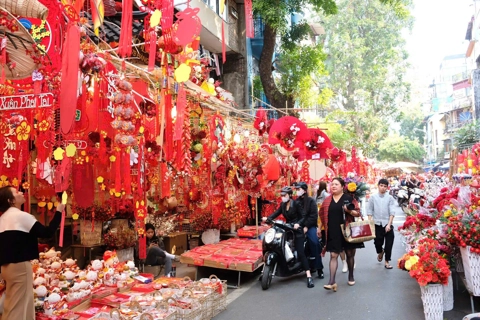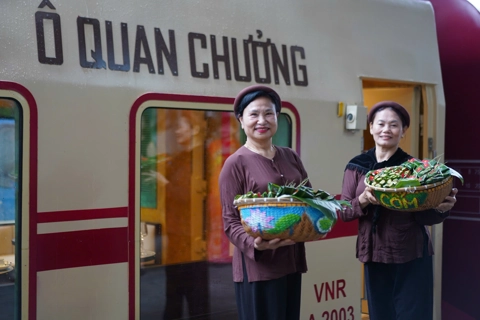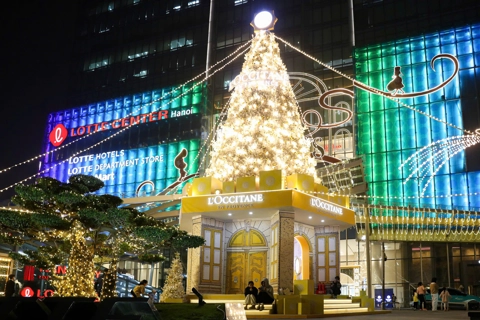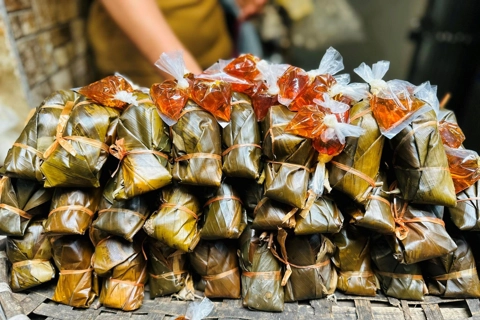Champa artistic items named national treasures
- V
Eight ancient exhibits representing the Champa culture are named among the country`s 77 national treasures.
The remnants of classical Cham art extant today are seen mainly in brick temples, sandstone sculptures in the round, and sandstone sculptures in high and low relief. A few bronze sculptures and decorative items made of metal remain as well.
The artistic legacy of Champa consists primarily of sandstone sculptures - both sculpture in the round and relief sculpture - and brick buildings. Some metal statues and decorative items have also survived. Much of the remaining art expresses religious themes, and though some pieces would have been purely decorative, others would have served important functions in the religious life of the Champa, which synthesized elements of Hinduism (especially Saivism), Buddhism and indigenous cults.
 |
|
Dong Duong Buddhist statue |
This is the most famous statue of the Dong Duong dynasty, dated back to the 3rd Century. The statue has 32 marvelous physiognomies of the Buddha.
The Dong Duong style of sculpture has been described as a highly original style of "artistic extremism", "with exaggerated, almost excessively stylized features." The figures are characterized by their thick noses and lips and by the fact that they do not smile. Prominent motifs include scenes from the life of the Buddha, Buddhist monks, dharmapalas (guardians of the Buddhist law), dvarapalas (armed temple guardians), the bodhisattva Avalokiteshvara, and the goddess of compassion Tara, who was also regarded as the shakti or spouse of Avalokiteshvara.
 |
|
Tara Bodhisattva statue |
Tara is a female Bodhisattva in Mahayana Buddhism who appears as a female Buddha in Vajrayana Buddhism. She is known as the "mother of liberation", and represents the virtues of success in work and achievements.
 |
|
My Son E1 alta |
The most famous work of the My Son E1 style is a large sandstone pedestal dated back to the second half of the 7th century. Originally, the pedestal had a religious function, and was used to support a huge lingam as a symbol for Siva, the primary deity in Cham religion.
The pedestal itself is decorated with relief carvings featuring scenes from the lives of ascetics: ascetics playing various musical instrument, an ascetic preaching to animals, an ascetic receiving a massage. To the Cham, the pedestal symbolized Mount Kailasa, the mythological abode of Siva which also accommodated numerous forest- and cave-dwelling ascetics, just as the lingam it supported represented the god himself.
 |
|
Tra Kieu alta |
The Tra Kieu Pedestal, consisting of a base decorated with friezes in bas relief, an ablutionary cistern, and a massive lingam, is regarded as one of the masterpieces of Cham art. The figures on the friezes are especially beautiful, and represent episodes from the life of Krishna as related in the Bhagavata Purana. At each corner of the pedestal, a leonine atlas appears to support the weight of the structure above him.
 |
|
Devi Goddess statue |
This stone statue is the most beautiful sculptured goddness in the Champa art, dated back to the 10th Century. The statue captures the beauty of an Indian goddess that has been "Champalized" with typical features of Champa culture. This Goddess has been called "the Venus of the East".
 |
|
Vo Canh stele |
 |
|
Avalokitesvara statue |
8. Avalokitesvara statue (10th Century) is showcased at the History Museum in Ho Chi Minh City. The statue, weighing 35 kilos, was found by Henry de Pirey in a small monastery in Dai Huu, central Quang Binh Province.
 |
|
Doc Chua animal statue |








